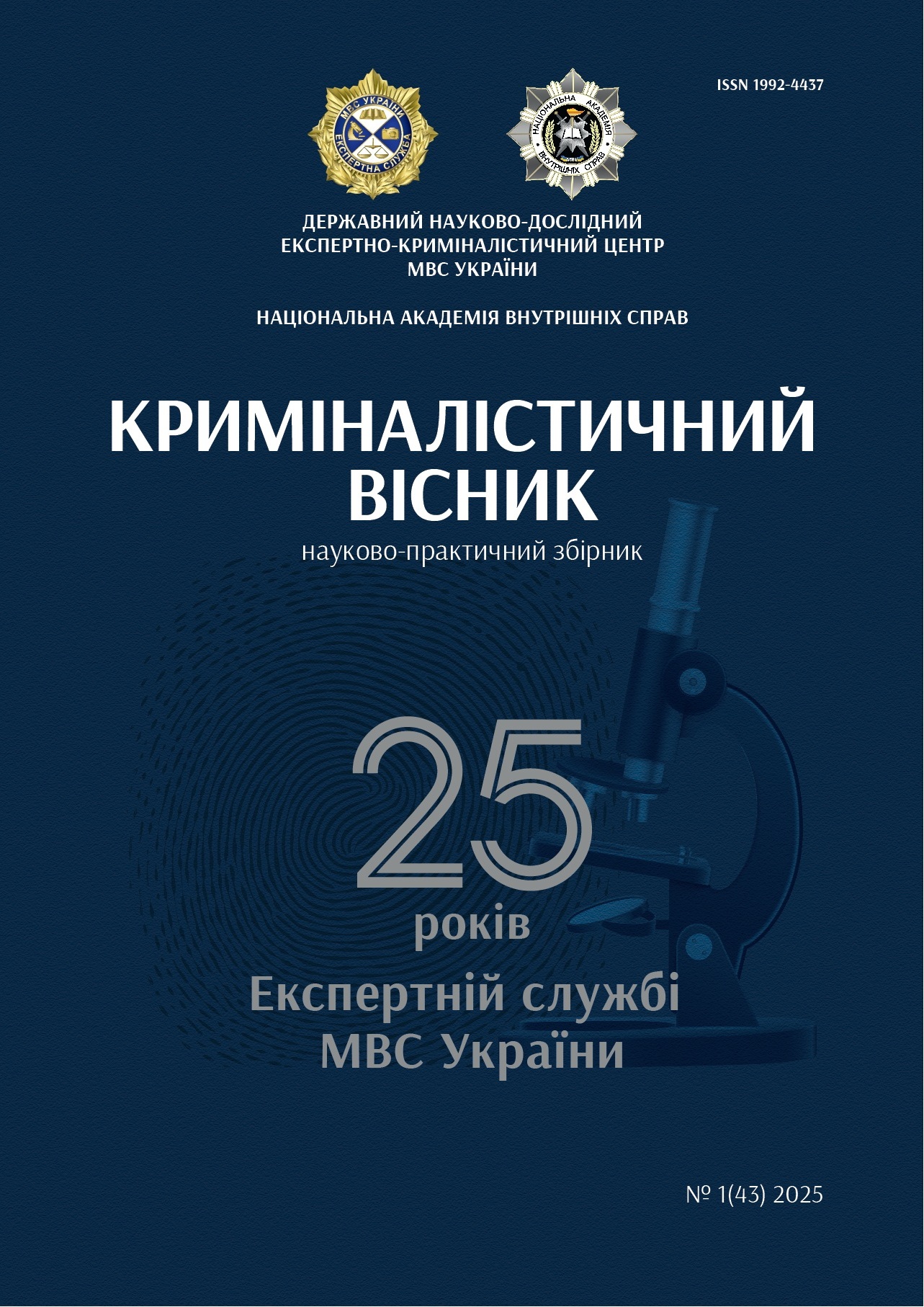“BABYTSKY’S CASE” (1911): ODESSA COURT RECOGNIZES… FINGERPRINTING
DOI:
https://doi.org/10.37025/1992-4437/2025-43-1-88Keywords:
history of forensics, history of dactyloscopy in Ukraine, fingerprints, papillary patterns, Odesa Court Chamber, H. M. Rudyi, M. S. Bokarius, Prince H. A. KherkheulidzeAbstract
Demonstrating the deep, inextricable connection of times, using the example of the so-called Babytsky’s
case (1911), which was considered by the Odesa Court Chamber, an attempt is made to scientifically understand the
history of the formation of fingerprinting as a scientific discipline in Ukraine at the beginning of the 20th century.
During the study, scientific methods were applied, in particular historical, historical-legal, historical-comparative and
biographical. The scientific novelty lies in the coverage, based on pre-revolutionary written sources, of additional
evidence about the little-known “Babytsky’s case”, which was considered by the Odesa Court Chamber in the fall
of 1911 and found the accused thief-recidivist Babytsky guilty of committing theft from the apartment of doctor
Korniienko. It is stated that the verdict was passed exclusively on the basis of the study of fingerprints that the police
found at the scene of crime on a polished wooden box. It was emphasized that this was the first case in the history of
forensic practice in Ukraine when the court recognized the results of fingerprint research as evidence.



